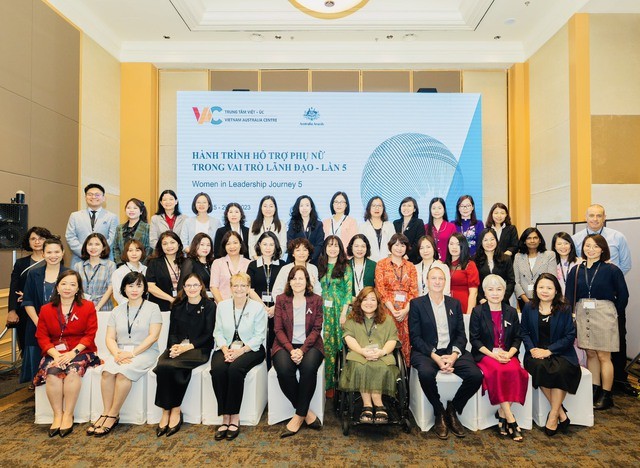
Charting a path to equality: Empowering women in public sector
Latest
 |
| Charting a path to equality: UNDP Resident Representative in Vietnam Ramla Khalidi (left) and Australian Consul General in Ho Chi Minh City Sarah Hooper. (Source: UNDP) |
Women's leadership in the public sector is crucial for promoting inclusive and effective governance. Women bring a unique set of perspectives, experiences, and skills that enhance decision-making processes. Vietnam’s Constitution explicitly states that women have equal rights with men in all aspects of daily life, spanning politics, economics, culture, society, and family. This commitment aligns with Sustainable Development Goal 5, emphasizing gender equality and empowerment of all women and girls.
Despite commendable efforts, a stubborn gap remains between men and women in top government jobs. It is time for decisive action to “invest in women and accelerate progress” towards gender equality in public offices, including in the provinces.
Over the past decade, more than 40% of staff in Vietnam's ministries have been women. Some ministries even have more women than men among their staff. But when it comes to top leadership roles, only around 21 percent of these are held by women. Invisible barriers, including persistent stereotypes about men and women, continue to hinder women from accessing the same opportunities as men. As a result, women often find themselves in lower-level positions where they have less influence in policy- and decision-making than men. This is especially true in key sectors such as industry, agriculture, transport, security and defense.
It is even harder for women to get involved in local decision-making. According to findings from a study supported by the United Nations Development Program (UNDP) and the Australian Government together with Ireland, women are under-represented in politics at the local level, particularly for village leadership positions. Of 832 villages surveyed, only 199 (less than 24 percent) had women leaders. While this is a significant increase from 12 percent in 2019, there is still a long road ahead.
To address these challenges, concrete steps are needed to help women succeed. Vietnam’s ambitious Gender Equality Strategy 2021-2030 sets targets for how many women should be in leadership positions. It aspires to see 60 percent of state agencies and local governments having women in key leadership positions by 2025. By 2030, it wants to see that figure rise to 75%. Meanwhile, the Election Law 2015 stipulates that 35% of candidates for elected offices across all levels should be women.
 |
| 'Women in Leadership Journey' programs. (Source: VGP) |
To meet these crucial targets, the country will need to address the obstacles that make it hard for women to move up in public sector careers. This includes changing the way people think about leadership, so that women are trusted, supported and, where relevant, elected to important positions.
It also means easing the burden of family responsibilities for women, which limits the time they have available for their careers. Making work hours flexible, letting people work from home, and putting in place adequate social assistance programs, including for childcare, can help fix these problems.
It is also crucial to help women learn new skills and meet other people who can help them in their careers. We have worked with the Vietnam’s Women Union to create women’s leadership networks and build the capacity of elected women leaders in six provinces. These groups build women’s leadership capabilities by giving them training, giving them opportunities to learn from each other, and offering them chances to meet new professional contacts. We have also worked with the Ho Chi Minh National Academy of Politics to design the “Women in Leadership Journey” and "Young Women Ready to Lead” programs. These programs help established and emerging women leaders be even better at what they do by giving them someone to learn from and work with.
Completing the legal framework for gender equality and establishing mechanisms for monitoring and evaluating compliance with gender equality targets in public administration is also crucial. This could include developing implementation strategies for gender equality in specific sectors or provinces, such as the Women's Leadership Index Australia is supporting the Ho Chi Minh Academy to develop.
Lastly, we need to make sure that everyone knows about the importance of treating men and women equally. This includes breaking gender stereotypes and developing codes of conduct for sexual harassment prevention.
As we celebrate International Women's Day, let us challenge the biases that limit achievement of gender equality in public administration. By “investing in women: accelerating progress,” we not only unlock the full potential of half the population but also build a more inclusive and equitable society for all.
Let us make sure every woman has the chance to be a leader and succeed!
 |
| It is time for decisive action to “invest in women and accelerate progress” towards gender equality in public offices, including in the provinces. (Source: UNDP) |

















